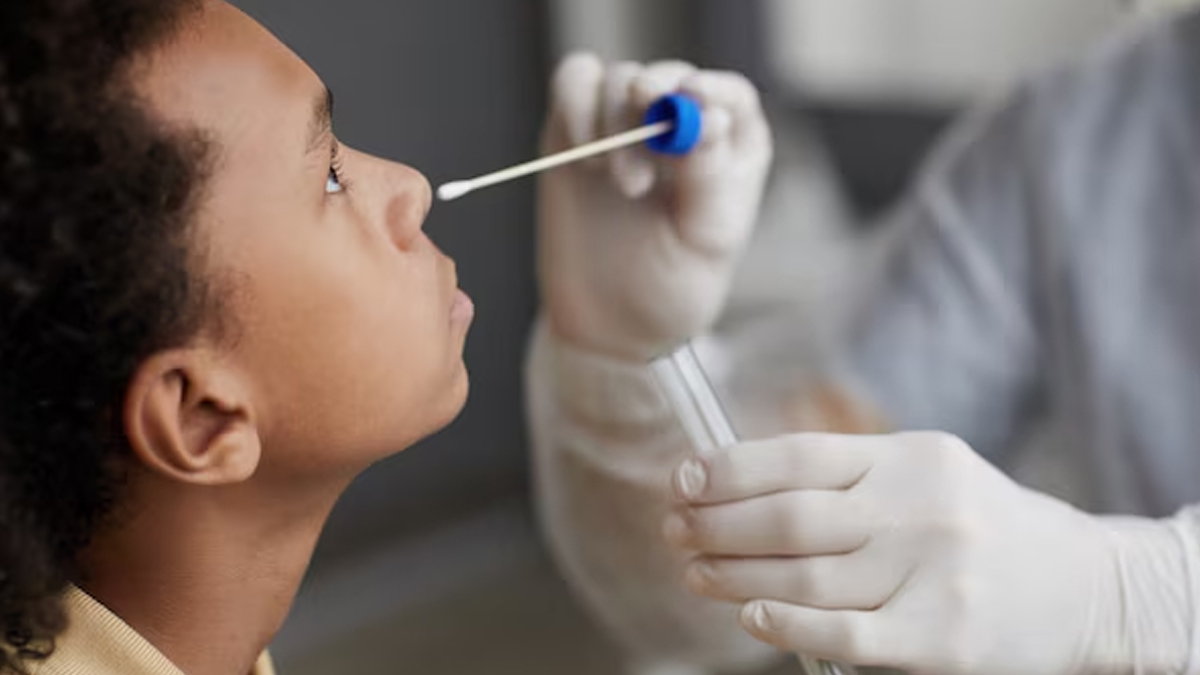
Infection, the invasion and growth of microorganisms, such as bacteria, viruses, or fungi, within the body’s tissues, is a common occurrence in tropical countries, including India. While the body’s own defence mechanisms cure many infections, others can progress to serious illness and even death if not treated. With rising drug resistance and the impact of the post-COVID era, infections have now become the second most common cause of death after cardiovascular disease.
Table of Content:-
If you are also suffering from a bacterial infection and have waited long enough for its natural recovery, you may need a Swab or culture test. To understand the role of these tests in treating bacterial infection, the editorial team of Onlymyhealth spoke to Dr Vishal Wadhwa, Head, Microbiology & Serology, Metropolis Healthcare Ltd. Read ahead to know what he shared.
What Is a Swab And Culture Test?
According to the Cleveland Clinic, a bacterial culture test is used to confirm whether you have a bacterial infection or not. The test identifies what type of bacteria caused the infection, and this helps guide treatment decisions.
Culturing the bacteria from a clinical sample plays an important role in diagnosis when a bacterial infection is suspected. Dr Vishal Wadhwa explained, “Culture identifies the exact microorganism responsible for the infection and helps guide targeted therapy.”
Also Read: Does Lack of Sleep Affect Cholesterol? Cardiologist Explains
Dr Whadwa further explained that for a bacterial culture test, a medical professional may advise you to undergo any of the culture tests mentioned below:
- Blood Culture
- Stool Culture
- Urine Culture
- Cerebrospinal fluid (CSF) culture
- Throat Culture
- Skin Culture
- Sputum or Mucus Culture
You must have seen medical professionals collecting your sample to perform culture tests, through a sterile cotton or soft material on a stick from the nose or throat; that is called a swab.
The Importance of Accurate and Timely Diagnosis
Accurate diagnosis followed by specific treatment is the first step in the management of any infection. Dr Wadhwa shared, “Early evidence for the type of microorganism involved usually comes from clinical symptoms supported by initial investigations such as complete blood counts or microscopic examinations of body fluids.”
Also Read: Personal And Intimate Hygiene Tips Every Women Should Know Before Travelling, Shares This Doctor
When to Prefer PCR and Molecular Methods
There are clinical scenarios where molecular tests, such as PCR, are more appropriate than culture. Dr Wadhwa shares a few examples, including:
- Quick turnaround is important, for example, in Sepsis.
- The causative bacterium is a slow grower, for example, Mycobacterium.
- Infections are suspected to be polymicrobial or multidrug-resistant.
Dr Wadhwa mentioned that these two methods often complement each other, and in many situations, PCR finds its place as a follow-up test when culture gives positive results.
Also Read: Rising Cases of Slip Disc and Sciatica in Young Adults: What’s Driving the Trend?
Importance of Choosing the Right Laboratory
Both culture and PCR need high-level diagnostic expertise, appropriate infrastructure, and highly trained personnel. Performance of both tests is significantly influenced by pre-analytical factors, such as prior use of antibiotics or poor collection techniques. Thus, appropriate timing and proper technique in sampling are critical to eliciting valid results.
Variations in Bacterial Causes Despite Similar Symptoms
Explaining the causes behind variations in bacteria even with similar symptoms, Dr Wadhwa stated, “Most bacterial infections are mono-microbial, but the responsible organism can vary widely, from gram-positive cocci like Staphylococcus to gram-negative rods like Escherichia coli, even when symptoms appear similar.”
For example, blood, skin, or urinary infections may present with very similar symptoms but be caused by entirely different bacteria. Laboratory identification is thus critical for selecting the proper treatment.
Polymicrobial Infections
Some infections have a polymicrobial origin, meaning multiple bacteria are involved. It is common in skin infections, intra-abdominal infections, and infections of the female genital tract. “This is when the microbiologist's expertise in interpreting culture and molecular results becomes paramount in the diagnosis and effective treatment,” Dr Wadhwa noted.
Guiding Targeted Antibiotic Therapy
Culture and molecular studies allow the establishment of antibiotic sensitivity patterns. In turn, such findings enable clinicians to escalate or de-escalate antibiotics from empirical treatment, thus permitting the optimisation of therapy for patients and hastening their recovery while preventing recurrence or other complications.
The Power of a Simple Diagnostic Test
Accurate diagnosis is now more essential than ever in a time when misuse of antibiotics has become a major global concern. Dr Wadhwa mentioned, “A simple swab or culture can be the difference between rapid recovery and prolonged illness. The next time a physician suggests one, remember: it's not an added step, it's the step leading to the right treatment.”
Bottomline
In the post-COVID era, bacterial infections have become one of the most common life-threatening health concerns. This has significantly raised the importance of swab or culture diagnosis. This not only helps identify the exact cause behind the infection but also paves the way for the doctor to prescribe the most effective, targeted antibiotics.
Also watch this video
FAQ
What does a swab mean?
A swab is a tool made of sterile cotton or soft material on a stick, used by medical professionals to collect samples, particularly from the nose or throat.What infections can be found in a swab test?
A swab test is conducted to detect infections such as COVID-19, influenza, RSV, and several other respiratory illnesses caused by viral or bacterial infections.What does a bacterial culture test for?
A bacterial culture test is used to confirm whether you actually have a bacterial infection and to identify the exact bacteria causing the infection, along with the severity of the infection.
How we keep this article up to date:
We work with experts and keep a close eye on the latest in health and wellness. Whenever there is a new research or helpful information, we update our articles with accurate and useful advice.
Current Version
Nov 24, 2025 13:23 IST
Published By : Sameeksha Sharma